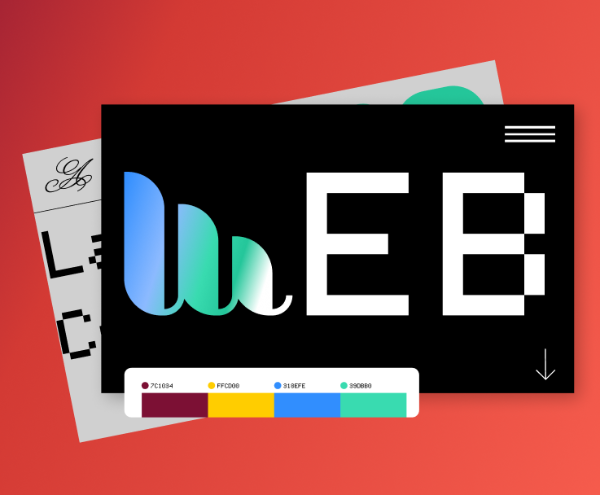Website Design and Development Company FAQ
Website Design and Development Company Trends
Website Design and Development Company
Cooking and baking are not only enjoyable activities, but they can also be a great way to express creativity and share delicious food with others. If you run a food blog or website, building recipes is a crucial part of your content creation. Whether you are a seasoned chef or a home cook, creating enticing and unique recipes can help you attract more visitors to your website and keep them coming back for more. Here are some tips on how to build recipes on your website that will impress your audience and keep them engaged.

How to Master Website Design and Development Company
Website Design and Development Company
1. Wix
Wix is a popular website builder that offers a user-friendly interface and a wide range of design templates to choose from. With Wix, small businesses can easily create a professional-looking website without any coding skills. The drag-and-drop editor makes it easy to customize your site to fit your brand and business needs. In addition, Wix offers a free plan that includes Wix branding and a subdomain, making it a great option for small businesses on a tight budget.
2. WordPress
WordPress is one of the most popular content management systems (CMS) in the world, powering millions of websites. While WordPress is known for its flexibility and customization options, it can be a bit intimidating for beginners. However, WordPress.com offers a free plan that allows users to create a basic website with limited customization options. For small businesses looking for more control and flexibility, WordPress.org is a better option, but it requires a hosting plan.
3. Weebly
Weebly is another user-friendly website builder that is perfect for small businesses. With Weebly, users can choose from a wide range of design templates and easily customize their website with drag-and-drop tools. Weebly also offers e-commerce features, making it a great option for small businesses looking to sell products online. While Weebly’s free plan includes Weebly branding and a subdomain, users can upgrade to a paid plan for more features and customization options.
4. Squarespace
Squarespace is a sleek and modern website builder that is perfect for small businesses looking to create a visually stunning website. With Squarespace, users can choose from a range of design templates and customize their site with a drag-and-drop editor. While Squarespace does not offer a free plan, they do offer a 14-day free trial, allowing users to test out the platform before committing to a paid plan.
5. Shopify
Shopify is a popular e-commerce platform that allows small businesses to create an online store. While Shopify is primarily geared towards e-commerce, they also offer a website builder that allows users to create a basic website for their business. With Shopify, users can choose from a range of design templates and customize their site with drag-and-drop tools. While Shopify does not offer a free plan, they do offer a 14-day free trial, allowing users to test out the platform before committing to a paid plan.
What is responsive web development?
Responsive web development is the practice of designing and building websites in a way that allows them to adjust and adapt to different screen sizes and devices. This means that a website will look and function properly on a desktop computer, a smartphone, a tablet, or any other device with a screen.
There are several key components of responsive web development that make it effective. These include:
1. Flexible grids: One of the main principles of responsive design is the use of flexible grids that can scale proportionally to fit different screen sizes. This allows for a website to maintain its layout and structure regardless of the device it is being viewed on.
2. Media queries: Media queries are CSS3 modules that allow developers to apply different styles based on the size of the screen. By using media queries, developers can create specific styles for different screen sizes, ensuring that a website looks and functions properly on all devices.
3. Fluid images: Another important aspect of responsive design is the use of fluid images, which can scale proportionally to fit different screen sizes. This prevents images from becoming distorted or cut off on smaller screens, ensuring a consistent user experience.
4. Mobile-first approach: With the increasing use of smartphones and tablets, it has become common practice to design websites with a mobile-first approach. This means that developers start by designing the mobile version of a website first, and then adapt it for larger screens. This approach ensures that a website is optimized for mobile devices, which are used by a majority of users.
Benefits of responsive web development
There are several key benefits of responsive web development, which make it essential for modern website design. These include:
1. Improved user experience: Responsive websites provide a seamless user experience across all devices, ensuring that users can easily navigate and interact with a website regardless of the device they are using. This leads to higher user satisfaction and increased engagement.
2. Higher conversion rates: With the increasing use of smartphones for online shopping and browsing, it is essential for e-commerce websites to be responsive. Responsive design ensures that users can easily make purchases and complete transactions on any device, leading to higher conversion rates and increased sales.
3. Better SEO performance: Search engines such as Google prioritize responsive websites in search results, as they provide a better user experience. Responsive design can improve a website’s SEO performance, leading to higher rankings and increased organic traffic.
4. Cost-effective: Responsive web development can be cost-effective in the long run, as it eliminates the need for separate mobile websites or apps. By designing a single responsive website, developers can ensure that the website looks and functions properly on all devices, reducing the need for additional resources and maintenance.
Challenges of responsive web development
While there are numerous benefits to responsive web development, there are also some challenges that developers may face. These include:
1. Compatibility issues: With the wide variety of devices and screen sizes available, developers may encounter compatibility issues when designing a responsive website. It is important to test a website on different devices and browsers to ensure that it looks and functions properly on all platforms.
2. Performance optimization: Responsive websites can be slower to load on mobile devices, especially if they contain high-resolution images or complex features. It is important for developers to optimize the performance of a website to ensure fast loading times and a seamless user experience.
3. Complexity of design: Designing a responsive website can be more complex than designing a traditional website, as developers need to consider how the layout will adapt to different screen sizes. It is important to create a flexible design that can scale proportionally and maintain a consistent user experience across all devices.

The Benefits of Website Design and Development Company
Website Design and Development Company
Overall, a random website generator can be a great way to discover new and interesting content online. Whether you are looking for a fun distraction, seeking to broaden your horizons, or simply wanting to explore the vast world of the internet, a random website generator can provide a fun and exciting way to do so. So why not give it a try and see where the internet takes you next?

